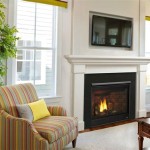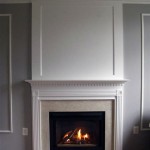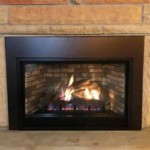How to Build an Electric Fireplace Surround
An electric fireplace provides supplemental heating and a visually appealing focal point for a room. Enhancing this feature with a custom-built surround can dramatically improve its aesthetic integration with the existing décor. Constructing a fireplace surround is a manageable project for homeowners with basic carpentry skills and tools. Careful planning and accurate execution are crucial for a successful outcome.
Planning and Design Considerations
Prior to commencing construction, meticulous planning is imperative. This includes determining the desired style, dimensions, and materials for the surround. The design should complement the room's existing architecture and furnishings. Factors such as mantel height, surround width, and the overall depth need careful consideration. Accurately measuring the electric fireplace insert is critical; ensure that the surround provides adequate clearance for ventilation and access for maintenance. Consult the manufacturer's specifications for the electric fireplace model.
The choice of materials will influence both the aesthetic and the cost of the project. Common options include wood (such as pine, poplar, or oak), MDF (Medium-Density Fiberboard), and even faux stone veneer. Wood offers a traditional and customizable appearance, while MDF provides a smooth surface for painting. Faux stone veneer can add a rustic or modern touch. Regardless of the selected material, it's essential to consider its durability, resistance to heat, and ease of workability.
Developing a detailed plan or sketch is highly recommended. This plan should depict the precise dimensions of each component, including the base, side panels, mantel, and any decorative elements. Consider generating a cut list to optimize material usage and minimize waste. This plan acts as a guide throughout the construction process, minimizing errors and ensuring a cohesive final product.
Construction Process: A Step-by-Step Guide
The construction process generally involves building a frame, attaching the facing material, and adding finishing touches. The frame serves as the structural backbone of the surround, providing stability and support. Typically, the frame is constructed using 2x4 lumber. Accurately cut the lumber to the dimensions specified in the plan. Assemble the frame using screws and wood glue, ensuring that all joints are square and secure.
Once the frame is complete, the facing material can be attached. This involves cutting the chosen material (e.g., wood, MDF, faux stone) to size and securing it to the frame. If using wood or MDF, consider using a combination of construction adhesive and finish nails to create a strong and seamless bond. Pay close attention to the alignment of the panels, ensuring that they are flush with the frame and each other. For faux stone veneer, follow the manufacturer’s instructions for proper installation, which may involve using mortar or adhesive.
The mantel is a prominent feature of the fireplace surround. It can be crafted from a single piece of wood or built up from multiple layers. Attach the mantel to the frame using screws and construction adhesive, ensuring that it is level and securely fastened. Consider adding decorative trim or molding to the mantel to enhance its visual appeal.
After the facing material and mantel are installed, address any gaps or imperfections. Use wood filler to fill nail holes and seams. Once the filler is dry, sand the entire surface smooth, preparing it for finishing. Apply a primer coat to the surface to ensure proper adhesion of the paint or stain. Then, apply the desired finish (paint, stain, or a combination) to the surround. Allow the finish to dry completely before proceeding.
Installation and Safety Precautions
Before installing the surround, ensure that the area surrounding the electric fireplace is clean and level. Carefully position the surround around the fireplace insert, ensuring that there is adequate clearance for ventilation and access to controls. Secure the surround to the wall using screws or anchors, depending on the wall's construction. Conceal the fasteners with wood filler or decorative caps for a finished look.
Safety is paramount throughout the entire construction and installation process. Always wear appropriate safety gear, including safety glasses, gloves, and a dust mask. When working with power tools, follow the manufacturer’s instructions and exercise caution. Ensure that all electrical connections are properly grounded and that the electric fireplace is plugged into a dedicated circuit. Never obstruct the ventilation openings of the electric fireplace, as this can lead to overheating and potential fire hazards. Consult a qualified electrician if unsure about electrical safety requirements.
Regular maintenance is essential to keep the electric fireplace surround looking its best. Dust the surround regularly with a soft cloth. Clean any spills or stains promptly to prevent permanent damage. Inspect the surround periodically for any signs of damage or wear, such as cracks, loose panels, or water damage. Repair any damage promptly to prevent it from worsening. With proper care and maintenance, the electric fireplace surround will provide years of enjoyment.

How To Build A Diy Built In Fireplace With An Electric Insert The Creative Mom

Diy Fireplace With Electric Insert Angela Marie Made

Diy Electric Fireplace Jenna Sue Design

Diy Electric Fireplace Build

Diy Fireplace With Electric Insert Angela Marie Made

How To Diy Built In Electric Fireplace Jenna Sue Design

Diy Electric Fireplace Full Hearted Home

How To Build A Diy Stone Fireplace Boxwood Design Co

Building A Custom Electric Fireplace Surround Planitdiy

Building A Custom Electric Fireplace Surround Planitdiy Build Surrounds Diy
Related Posts








